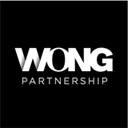27 April, 2015
Facts
In Blackrock, Inc. v OHIM, Case T-59/14 (29 January 2015), the applicant, Blackrock Inc, an investment management corporation (“Applicant”), filed an application for the registration of a Community trade mark with the Office for Harmonisation in the Internal Market (“OHIM”) for the word sign “INVESTING FOR A NEW WORLD” in classes 35 and 36 (“Slogan”). The examiner objected to the registration of the Slogan pursuant to Article 7(1)(b) and Article 7(2) of Regulation No 207/2009 and the Applicant filed a notice of appeal with OHIM.
The First Board of Appeal of OHIM (“Board of Appeal”) dismissed the appeal on a number of grounds. Having defined the relevant public in this case as English-speaking consumers and professionals who would have a “relatively high” level of attention, considering the nature of the services at issue, the Board of Appeal was of the view that the Slogan was merely a laudatory message according to which the services concerned were intended since the services in question relate to financial investments or related services and have a close link with the word “investing”. On this basis, the Board of Appeal concluded that the Slogan was not an indication of the commercial origin of those services, and the Slogan also did not enable the public to memorise it easily and instantly as a distinctive mark since it was not “imaginative, surprising or unexpected”.
The Applicant filed an appeal to the General Court (“Court”) on the ground that there was an infringement of article 7(1)(b) of Regulation No 207/2009. The Applicant submitted that, among other things, the Board of Appeal had incorrectly assessed the distinctive character of the Slogan.
Decision
Having considered settled case-law, the Court highlighted that in order for a mark to possess distinctive character, the mark must serve to identify the goods or services in respect of which registration is applied for as originating from a particular undertaking, and thus to distinguish those goods or services from those of other undertakings.
The Court proceeded to stress that in assessing the distinctive character of a mark; one must make reference to the goods or services in respect of which registration has been applied for and, also reference the relevant public’s perception of the mark. The Court also stated that the mere fact that a mark is a promotional formula and laudatory in nature is not sufficient to support the conclusion that the mark is devoid of a distinctive character and that in any case, a mark could be perceived by the relevant public to be both a promotional formula and an indication of the commercial origin of the goods or services. Moving on to the definition of the relevant public, the Court agreed with the Board of Appeal that that the public consists of both average consumers and professionals and that, since the mark applied for consists of English words, its distinctive character has to be assessed by reference to the English-speaking public.
Having established the settled position and the scope of the relevant public, the Court went on to decide if the Board of Appeal had correctly analysed the meaning of the Slogan to conclude whether the mark had a distinctive character. Since the Court pointed out that the Slogan consists of a number of word elements, the assessment of the distinctiveness of the mark must be based on the overall perception by the relevant public.
On scrutinising the Slogan, the Court held that the Board of Appeal had been correct in its findings. Further, the Court found that the Slogan did not have any particular semantic depth which would prevent the relevant public from making a direct link with the services covered by the mark. Hence, the Slogan constituted a banal expression which the relevant public would not need to analyse to understand it. In addition, the Court also held that the Slogan took the form of an ordinary advertising message which was devoid of any elements that might enable the relevant public to memorise it as a trade mark in respect of the services designated. Accordingly, the Board of Appeal was right in concluding that the Slogan did not have any distinctive character.
The Court also addressed the Applicant’s assertion that the expression in the Slogan may have numerous meanings which would show originality and resonance. On the facts, the alternative meanings put forward by the Applicant continued to denote positive connotations of the Slogan in relation to the services at issue. Hence, the Slogan continued to be insufficiently original or resonant to require at least some interpretation, thought or analysis on the part of the relevant public.
The Court also noted that at least one of the possible meanings of the Slogan designated a characteristic of the goods or services concerned, and registration of such a mark would be prohibited under article 7(1)(b) of Regulation No 207/2009.
Our Comments / Analysis
Singapore’s position is that the test for registering slogans should be no different than that for other types of marks and that it would not be appropriate to apply to slogans a stricter test than that applicable to other types. It illustrates that the registration of slogans is often much more difficult than traditional signs such as words, logos and figurative marks since they are often highly descriptive.
For further information, please contact:
Chung Nian Lam, Partner, WongPartnership
chungnian.lam@wongpartnership.com
Jeffrey Lim, Partner, WongPartnership
jeffrey.lim@wongpartnership.com





